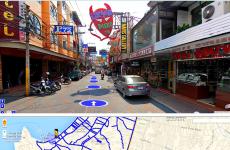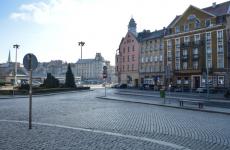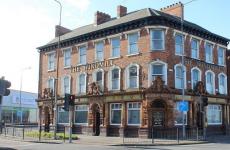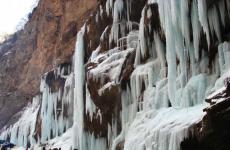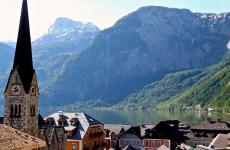Spain. Geography, description and characteristics of the country
Spain is located in the southwestern part of Europe, on the Iberian Peninsula. The country also owns the Balearic and Canary Islands. Spain borders Portugal, France, Andorra and Gibraltar. In the north and west, Spain is washed by the Atlantic Ocean, in the south and east by the Mediterranean Sea.
The climate of Spain is Mediterranean, hot and dry, in the northern and northwestern parts of the country it is maritime, in the central it is sharply continental. The average air temperature on the coast in winter is 8 - 12 degrees, in summer 21-25 degrees.
There are many rivers in Spain, but only a small part of the Guadalquivir River is accessible for navigation. The largest rivers in the country are the Guadalquivir, Tagus, Duero, Guadiana, and Ebro. There are few lakes in Spain. There are small lakes on the shores of the Mediterranean Sea and the Gulf of Cadiz, the largest are Mar Menor and Albufera.
Spain is home to up to 8,000 plant species, many of which are endemic. Forests are preserved only in the north of the country, and are represented mainly by broad-leaved species. Evergreen tree species are found in the mountains, on the border of alpine meadows.
The fauna of Spain is quite rich. In the northern regions there are deer, roe deer, wild boars, and in the Cantabrian mountains there is a brown bear. Of the European countries, Spain is the richest in the number of bird species. There is a lot of fish in the estuaries and the Atlantic, mainly tuna, salmon, sardines, herring, cod and anchovies.
Country position:
Southwestern Europe, bounded by the Bay of Biscay, the Mediterranean Sea, the North Atlantic Ocean, and the Pyrenees Mountains, southwest of France
Footprint:
505,370 sq. km
Land:
498,980 sq. km
Water:
6,390 sq. km
Length of land borders:
1,917.8 km
Length of coastline:
4,964 km
Special economic zone:
200 nm (only applies to the Atlantic Ocean)
Continental shelf:
-
Climate of the country:
Typical seasonal. Moderate; clear, hot summers in inland areas, more moderate along the coast; cold winters
Terrain:
flat, surrounded by hills; Pyrenees in the north
Highest/lowest point in the territory:
Lowest point:
Atlantic Ocean 0 m.
Highest point:
Pico de Teid (Tenerife) in the Canary Islands 3,718 m.
Minerals:
coal, linite, iron ore, copper, lead, zinc, uranium, tungsten, mercury, pyrites, magnesite, fluorite, gypsum, kaolin, potash
Land use:
Share of arable land:
27.18 %
Perennial crops:
9.85 %
Other:
62.97 % (2005)
Irrigated land:
37,800 sq. km (2003)
Total volume of renewable fresh water resources:
111.1 km cubic (2005)
Freshwater use (households/industry/agriculture):
Footprint:
37.22 cu.m. km/year (13%/19%/68%)
Per capita:
864 cc m/year (2002)
Typical natural disasters and disasters:
periodic drought, occasional flood
Volcanism:
In Spain, there is volcanic activity in the Canary Islands, located off the northwestern coast of Africa; The largest volcano is Teide.
Spain is a large state in the southwestern part of Europe, occupying most of the Iberian Peninsula, the Canary, Pitius, and Balearic Islands. Territory area - 504,750 sq.m., land area - 499,400 sq.m.
Geographical characteristics
The Kingdom of Spain is located in southern Europe, occupying approximately five-sixths of the Iberian Peninsula. The position is isolated, due to the presence of the Pyrenees Mountains. Except for Portugal on the western side.

The territory borders countries such as France, Andorra and Gibraltar to the northwest and south. Approximately 30% of the country is the Meseta plateau massif with the Cordillera Central ranges in the central part. The rest of the territory is occupied by the Pyrenees, which make the center of Spain difficult to access from the mainland.
Nature
 Mountains
Mountains
The main part of the country is occupied by the Meseta plateau with the Central Cordillera. To the north and east are the Iberian, Pyrenean, Cantabrian and Catalan mountains, to the south are the Sierra Morena and Andalusian mountains. Most of the territory is occupied by plains, pastures, the coast is distinguished by beautiful beaches and bays...
 Rivers and lakes
Rivers and lakes
Numerous rivers flow through the territory and there are lakes with predominantly rainfall origin. This affects the water level - in the summer, with low humidity, rivers and lakes become very shallow; in winter, the water level rises significantly.
The following rivers flow through the country: Tagus with a length of 910 km, Duero - 780 km, Guadiana, whose length is 820 km, Guadalquivir with a length of 560 km. The country's lakes are located mainly in mountainous areas; they are not subject to seasonal fluctuations as much as the water resources of the plains...
 Seas and oceans surrounding Spain
Seas and oceans surrounding Spain
The special geographical location of Spain makes it attractive to tourists. This is due to the presence of more than 4 thousand km of coastline with luxurious beaches, picturesque cliffs, and quiet, cozy bays. The country is washed in the south and east by the warm waters of the Mediterranean Sea, in the north by the waters of the Bay of Biscay, and in the southwest by the waters of the Atlantic Ocean...
 Plants and animals of Spain
Plants and animals of Spain
The flora of Spain is very rich, it has approximately 8 thousand plants, many of which are endemic. But extensive forests have been preserved only in the north of the country, which is associated with active economic activity. The diversity of flora is determined by the climate, mainly broad-leaved forests (ash, chestnuts, elms, beech, oaks), in the mountains there are evergreen coniferous and oak forests, and there are extensive alpine meadows higher up.
Spain is characterized by deciduous forests, including pedunculate and sessile oaks, ash, and hazel. Beech and fir are common in the mountains. Mediterranean areas are rich in plantings of laurel and holm oak. Due to human intervention, many forests have already disappeared or turned into vast pastures, along the edges of which there are sparse forest belts and primary shrubs. This border consists of broom, retama, hawthorn, thorn, and thickets of wild roses.
The richest flora are the North Atlantic slopes of the country and the lowland parts of the Ebro River. The “dry” part of the country is distinguished by Mediterranean types of vegetation - thickets of juniper, myrtle, and cistus.
The fauna is also very diverse; roe deer, wild boars, and deer live in the northern regions; the Pyrenean goat and deer are preserved in the mountains. You can also meet brown bears, foxes, wolves, and lynxes in the mountains. The country's territory is considered the richest in Europe in terms of bird diversity. In summer, about 25 species of birds of prey live on the territory; in late autumn and early spring, rare species of birds, colonies of flamingos, and geese can be observed on the territory.
Reptiles are found in abundance in Spain - snakes, lizards, chameleons. In the southeast and semi-desert you can find scorpions and tarantulas. In the inland waters and surrounding seas there are salmon, lobsters, as well as tuna, lobsters, crayfish...
 Climate of Spain
Climate of Spain
The climate is distinctly Mediterranean subtropical, winters are mild and rainy, summers are hot and dry. But from northwest to southeast the climate changes sharply, due to the proximity of Africa. The average annual temperature fluctuates between +14/+19°, in winter - up to +4/+5°, in summer the average temperature is +29°. The level of precipitation varies for individual regions of the country - in the mountains it reaches 1000 mm per year in winter, in flat areas - 300-500 mm per year...
Resources

Spain is rich in natural resources due to its geographical location. The Sierra Morena Mountains contain the largest deposits of zinc, lead ores, manganese, and copper pyrite. Iron ore is concentrated in the Basque Country, Leon, Asturias, Almeria, Teruel, Granada, the estimated volume of such ores is approximately 2.5 million tons. Galicia and the northern part of the country are rich in tungsten and tin, the provinces of Salamanca and Cordoba are rich in uranium ores.
In terms of mercury reserves, Spain is in first place; large reserves of cinnabar are located in the river valley. Baldeazaga, province of Ciudad Real. Pyrites are concentrated in the southern regions of the Sierra Morena Mountains. Reserves of coal, lingites, and anthracite are concentrated in the northern regions, Galicia, Aragon, and Asturias. But there is very little coking coal, and its overall quality is not high...
Petty theft and fraud against foreign tourists are quite common in Spain. Therefore, in order to avoid unpleasant incidents, it is worth remembering simple rules of safe behavior:
You must always have your ID with you. However, instead of the original passport, it is better to carry a photocopy (pages with photo and visa), which should preferably be certified with a hotel stamp.
- It is better not to carry purses, purses and other valuables in the back pocket of your trousers.
- A woman’s handbag is always the subject of increased attention from street thieves. The safest thing to do is to put the strap over your head and hold the purse close to your body.
- If on the street a stranger suddenly actively tries to shake off your jacket, bring you bags, give you a souvenir or something else, this is a clear reason to be vigilant. In such a situation, it is better not to make contact and try to get away from the “well-wisher” as quickly as possible.
- Walking on the sidewalk next to the roadway is not recommended in order to avoid tear-on theft (when a motorcyclist snatches a bag from a passerby while moving).
- Do not fall for the bait of actors playing impromptu games on the street (cards, lotteries, “thimbles”, etc.).
. Baggage
When you arrive at the airport, keep a close eye on your luggage. Thefts often occur at baggage claim.
- Be especially careful when loading and unloading luggage upon arrival and departure from the hotel. In this situation, victims of fraud are usually tourists who leave their luggage unattended. Usually thefts are committed by a group of people.
. Money
The main amount of money, as well as documents, should be left in the safe in the room or at the hotel reception.
- In the room, try not to leave keys, money, documents and valuables in sight of the staff and strangers.
. ATM traps
A typical scenario: a tourist withdraws money from an ATM. At the exit from the ATM, a supposedly random passer-by calls out to him and points to a bill on the asphalt, saying that the tourist accidentally dropped it. Surprised by the stranger’s thoughtfulness, the tourist picks up the bill, at which time his bank card is taken out with deft hand movements. Suspecting nothing, the victim of deception thanks the stranger and moves on. Meanwhile, his bank account is emptying.
- All Spanish ATMs have a card acceptor made in such a way that it has no protruding parts. Therefore, pay attention to any kind of “extensions” above the card slot. This could very well be a magnetic stripe copying device installed by scammers. As a rule, the “add-on” kit includes a miniature camera aimed at the keyboard, or an overlay keyboard that imitates a real one.
. To make your holiday enjoyable...
Don't neglect hats. They can protect against sunstroke.
- When you first sunbathe, be sure to use protective creams for your body and face.
- Protect your eyes with quality sunglasses.
- In hot weather, you should drink more fluids to avoid dehydration.
- It is better not to drink tap water. Inexpensive drinking water is sold in shops and hotels.
- Be careful when buying vegetables and fruits, carefully check that they are fresh.
Along the coastline, Spain borders the south of France and its first major city is the beautiful Perpignan. This city is considered the capital of French Catalonia. A significant part of the local population here is represented by Spanish Catalans, who crossed the border and remained here in the last days of the Spanish Civil War.
Actually, it is called a “border” quite arbitrarily. If you go there from Spain by car, you will not even be asked for documents for verification. Previously, there was a post here and the police checked everyone’s passports and documents for legal stay in the country, but after France joined the European Union in 1951, it was removed.
Catalan speech can still be heard in the city, but the spirit of France is still stronger. Perpignan is a small provincial city and the most beautiful part of it is the embankment along the La Bassa river. It is made in two tiers of greenery: shady chestnut trees along the footpath and rosemary and rose bushes a little lower, at river level.
As in every city with history, there is an old town area and it is quite compact. According to the classics of the genre, narrow streets and a large cathedral.
The town is located next to the highway leading to Spain and can serve either as a short stop on the way to explore the coast, or as a separate point in your tourist plan.
There are all the main attractions that will be interesting to explore for lovers of Medieval history.
The Palace of the Kings of Majorca (Palais des Rois de Majorque) is the most famous landmark, around which the city itself grew. Located on the south side of the old town. You can study both the façade of the building and the interior decoration. The palace was built at the end of the 13th century as a residence for King Jaime II of Mallorca, son of King Jaime I of Aragon and Valencia (the "Conquistador"), who reconquered Moorish-occupied Mallorca. After the king's death, his kingdom was divided between his two sons: the eldest, Pere II, received the title of Count of Barcelona and King of Aragon and Valencia, along with most of the inheritance. The remaining territories, including Majorca and Roussillon, passed to the younger James II, who ruled from Perpignan and Montpellier. Today, the palace often hosts exhibitions and summer music concerts.
Saint-Jean Cathedral received cathedral status in 1602. Adjacent to the cathedral is the Romanesque church of St-Jean-le-Vieux, which is currently closed. And if you walk a little from the southern gate of the cathedral, you can see Campo Santo, which used to serve as a cemetery, one of the oldest in France. This is a one-of-a-kind cloister cemetery. Today summer festivals are held here. In the northern part of the city is the Perpignan Gate. This red brick building is the symbol of the city - the remains of a medieval fortress wall. The building used to be a prison. Today it is a museum of Catalan art and traditions (Musée Catalan des Arts et Traditions Populaires). But the main gate of the city is considered to be the Notre Dame Gate, adjacent to Le Castillet. They were added in 1478 by Louis XI. This was the main gate to Perpignan through the fortress wall.
There is also a main square - place de la Loge, which is so small that you may not even immediately understand that you are in the main square. There is a small palace here, the Loge de Mer, which used to be the city's trading exchange and the main office of maritime trade, which can be identified by the boat-shaped weathervane.
And, of course, in Perpignan there is the Hyacinthe-Rigaud Museum. At one time, Picasso, Dufy and Cocteau lived and worked here. Now the museum houses a collection of modernist art. The address of the museum is 6 rue de l’Ange.
To get acquainted with the most French dish - oysters, it is better to go to Port Leucate, in the French commune of the Roussillon region. There are oyster farms here. You most likely won’t find luxury restaurants serving oysters and dry white wine, but if you want to taste a dozen of the freshest oysters for 6.5 euros, you can do this at a table in a simple cafe. Most people come to Port Leucate to buy a whole box of oysters weighing several kilograms - the prices here are ridiculously low. You can buy a kilogram for only 3.5 euros.
If you are planning to explore the French coast from Spain, then these towns should definitely be included in your plan. Original and unusual, and their proximity to the Spanish border makes them even more attractive.
